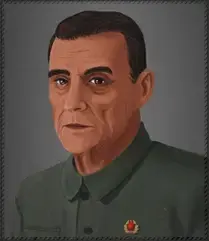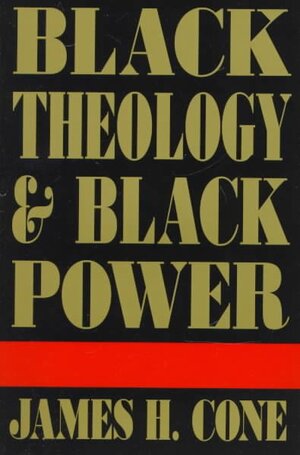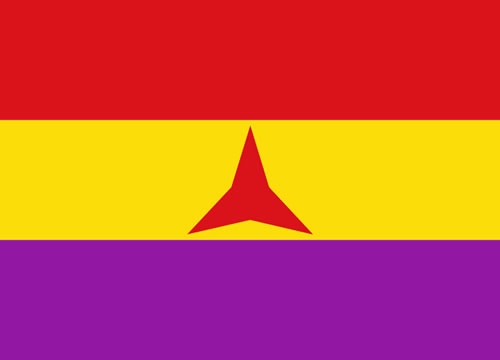The People's Democratic Republic of Yemen was a socialist country that existed from 1967 to 1990 as a state in the Middle East in the southern and eastern provinces of the present-day Republic of Yemen, including the island of Socotra.
British rule
In 1838, Sultan Muhsin Bin Fadl of the state of Lahej ceded 194 km2 (75 sq. miles) including Aden to the British. On 19 January 1839, the British East India Company landed Royal Marines at Aden to occupy the territory and stop attacks by pirates against British shipping to India. It then became an important trading hub between British India and the Red Sea, and following the opening of the Suez canal in 1869, it became a coaling station for ships en route to India. Aden was ruled as part of British India until 1937, when the city of Aden became the Colony of Aden. The Aden hinterland and Hadhramaut to the east formed the remainder of what would become South Yemen and was not administered directly by Aden but were tied to Britain by treaties of protection with local rulers of traditional polities that, together, became known as the Aden Protectorate. Economic development was largely centered in Aden, and while the city flourished, the states of the Aden Protectorate stagnated.
Decolonization
In 1963, Aden and much of the Protectorate were joined to form the Federation of South Arabia with the remaining states that declined to join, mainly in Hadhramaut, forming the separate Protectorate of South Arabia. Both of these polities were still tied to Britain with promises of total independence in 1968. Two nationalist groups, the Front for the Liberation of Occupied South Yemen (FLOSY) and the National Liberation Front (NLF), began an armed struggle known as the Aden Emergency on 14 October 1963 against British control and, with the temporary closure of the Suez Canal in 1967, the British began to withdraw. One faction, NLF, was invited to the Geneva Talks to sign the independence agreement with the British. However, Britain - who during its occupation of Aden signed several treaties of protection with the local sheikhdoms and emirates of the Federation of South Arabia - excluded them in the talks and thus the agreement stated "...the handover of the territory of South Arabia to the (Yemeni) NLF...". Southern Yemen became independent as the People's Republic of Southern Yemen on 30 November 1967, and the National Liberation Front consolidated its control in the country.
In June 1969 a Marxist wing of the NLF gained power in an event known as the Corrective Move. This wing reorganized the country into the People's Democratic Republic of Yemen (PDRY) on 30 November 1970. Subsequently, all political parties were amalgamated into the National Liberation Front, renamed the Yemeni Socialist Party. The People's Democratic Republic of Yemen established close ties with the Soviet Union, the People's Republic of China, Cuba, and the Palestinian Liberation Organization. East Germany's constitution of 1968 even served as a kind of blueprint for the PDRY's first constitution.
The new government embarked on a programme of nationalisation, introduced central planning, put limits on housing ownership and rent, and implemented land reforms. By 1973, the GDP of South Yemen increased by 25 percent. And despite the conservative environment and resistance, women became legally equal to men, polygamy, child marriage and arranged marriage were all banned by law. Equal rights in divorce were also sanctioned. The Republic also secularized education and sharia law was replaced by a state legal code.
The major communist powers assisted in the building of the PDRY's armed forces. Strong support from Moscow resulted in Soviet naval forces gaining access to naval facilities in South Yemen.
Daily Life in South Yemen
South Yemen's ethnic groups were ethnic Yemeni Arabs (92.8%), Somalis (3.7%), Afro-Arab 1.1%, Indians and Pakistanis (1%), and other (1.4%) (2000). The only recognised political party in South Yemen was the Yemeni Socialist Party, which ran the country and the economy along self-described Marxist lines, modeled on the Soviet Union.
Women's rights under the socialist government were considered the best in the region. Women became legally equal to men and were encouraged to work in public; polygamy, child marriage, and arranged marriage were all banned; and equal rights in divorce received legal sanction. The Supreme People's Council was appointed by the General Command of the National Liberation Front in 1971. In Aden, there was a structured judicial system with a Supreme Court. Education was paid for through general taxation. Income equality improved, corruption was reduced, and health and educational services expanded.
There was no housing crisis in South Yemen. Surplus housing meant that there were few homeless people in Aden, and people built their own houses out of adobe and mud in the rural areas. There was little industrial output, or mineral wealth exploitation, in South Yemen, until the mid-1980s, following the discovery of significant petroleum reserves in the central regions near Shibam and Mukalla. The main sources of income were agriculture, mostly fruit, cereal crops, cattle and sheep, fishing and later, oil exports.
South Yemen developed as a Marxist, mostly secular society ruled first by the National Liberation Front, which later morphed into the ruling Yemeni Socialist Party. The only avowedly Marxist nation in the Middle East, South Yemen received significant foreign aid and other assistance from the USSR and East Germany, which stationed several hundred officers of the Stasi in the country to train the nation's secret police and establish another arms trafficking route to Palestine. The East Germans did not leave until 1990, when the Yemeni government declined to pay their salaries which had been terminated with the dissolution of the Stasi during German reunification.
Disputes with North Yemen
Unlike the early decades of East Germany and West Germany, North Korea and South Korea, or North Vietnam and South Vietnam, the Yemen Arab Republic (North Yemen) and South Yemen (PDRY) remained relatively friendly, though relations were often strained. Fighting broke out in 1972, and a short-lived, small proxy border conflict was resolved with negotiations, where it was declared unification would eventually occur.
However, these plans were put on hold in 1979, as the PDRY funded Red rebels in the YAR, and war was only prevented by an Arab League intervention. The goal of unity was reaffirmed by the northern and southern heads of state during a summit meeting in Kuwait in March 1979.
In 1980, PDRY president Abdul Fattah Ismail resigned and went into exile in Moscow, having lost the confidence of his sponsors in the USSR. His successor, Ali Nasir Muhammad, took a less interventionist stance toward both North Yemen and neighbouring Oman.
Civil War
On January 13, 1986, a violent struggle began in Aden between Ali Nasir's supporters and supporters of the returned Ismail, who wanted power back. Fighting, known as the South Yemen Civil War, lasted for more than a month and resulted in thousands of casualties, Ali Nasir's ouster, and Ismail's death. Some 60,000 people, including the deposed Ali Nasir, fled to the YAR. Ali Salim al-Beidh, an ally of Ismail who had succeeded in escaping the attack on pro-Ismail members of the Politburo, then became General Secretary of the Yemeni Socialist Party.
Yemeni Unification
Against the background of the perestroika in the USSR, the main backer of the PDRY, political reforms were started in the late 1980s. Political prisoners were released, political parties were formed and the system of justice was reckoned to be more equitable than in the North. In May 1988, the YAR and PDRY governments came to an understanding that considerably reduced tensions including agreement to renew discussions concerning unification, to establish a joint oil exploration area along their undefined border, to demilitarize the border, and to allow Yemenis unrestricted border passage on the basis of only a national identification card. In 1990, the parties reached a full agreement on joint governing of Yemen, and the countries were effectively merged as Yemen.
After three years, however, a political crisis arose between the South's YSP and the North's GPC and Islah parties after the parliamentary elections in 1993. A year later, South Yemen declared its secession from the North Yemen in 1994 and a new, unrecognised secessionist state, the Democratic Republic of Yemen, which ended with its dissolution and the North Yemen occupying South Yemen after the 1994 civil war. 23 years later, another attempt to restore South Yemen (as only a country, not a socialist state) with the Southern Transitional Council as its new government began in 2017 and continues into the present day.
Og post made by @WhoaSlowDownMaurice@hexbear.net
Yemen’s Socialist Experiment Was a Political Landmark for the Arab World
Megathreads and spaces to hang out:
- 📀 Come listen to music and Watch movies with your fellow Hexbears nerd, in Cy.tube
- 💖 Come talk in the New Weekly Queer thread
- 🔥 Read and talk about a current topics in the News Megathread
- 🐱👤 Come talk in the New Weekly PoC thread
reminders:
- 💚 You nerds can join specific comms to see posts about all sorts of topics
- 💙 Hexbear’s algorithm prioritizes comments over upbears
- 💜 Sorting by new you nerd
- 🌈 If you ever want to make your own megathread, you can reserve a spot here nerd
- 🐶 Join the unofficial Hexbear-adjacent Mastodon instance toots.matapacos.dog
Links To Resources (Aid and Theory):
Aid:
Theory:
This 13 year-old student just (basically) came out to me as a tankie.
Months ago he was asking me who my favourite historical figures were. I gotta play it cool, not say "Kim Il-Sung", and get sacked from my job. So I say I need to give it a thought, and come back later in the day with "John Brown". He asked if there's anyone else. "Um... Malcome X". So then I think to ask, "so who's your favourite historical figure, and he answers "Thomas Sankara." "Oh ya Sankara" I say and then we chat about his history and French imperialism.
Every other day we chat about Gaza, Western imperialism, white supremacy, etc. This goes on for 2 months. So yesterday I go and ask him "so what are you reading now" and he goes "I just finished Blackshirts and Reds". Me: "you're reading Parenti!". I suggest Walter Rodney and Vijay Prashad.
I guess he scoped out my public social media and spotted the breadcrumbs there.
“The US air strikes on Yemen are another example of the Anglo-Saxons’ perversion of UN Security Council resolutions,” Maria Zakharova, Russia’s foreign ministry spokeswoman, said.
Anglo-Saxons' perversion.

Just got subjected to
 content crowing about how the Houthis have apparently been destroyed thus owning the commies.
content crowing about how the Houthis have apparently been destroyed thus owning the commies.These are the smuggest shitheads I’ve ever seen, the Houthis wouldn’t still be around if a couple of bombs were enough to stop them. I don’t understand why these supposedly pro Palestine people are also celebrating the US apparently destroying them. Why do they think this started?
NATO leftists are an insufferable bunch. What's most frustrating is how deceiving they are. They'll get you to think they're an ally by supporting everything you do, pushing for stronger labor unions, nationalizing of industries, and even the breakdown of current power structures through revolution. But all you have to do is actually put forth revolutionary action or mention a foreign country and the liberal inside of them awakens.
NATO leftists by proxy are Major non-NATO allies like Australia, Japan, and South Korea. They have the same takes too.
Like it was the same fucking bombs the US shipped to Saudi Arabia. They already did survived it and won
Apparently my 9th grade English teacher’s been telling her students about how I always made my assignments about communism.
Open blahaj zone to scroll memes, find child labor apologists
Sure its not exactly ideal, but if this is a kid whose parents own the franchise and he is legally working and being paid at the family business its better than him being left at home on the xbox.

 getting my bloods done for HRT
getting my bloods done for HRT woman drawing the blood says "you're [redacted]'s son aren't you?"
woman drawing the blood says "you're [redacted]'s son aren't you?"GUESS WHO GOT HER PTSD DIAGNOSIS
WHOOOO MENTAL TRAUMA TIME
on that mental issue grindset
Remember when Rand Paul got beaten almost to death over a lawn maintenance dispute?
"There were no autistic people in the past!"
My brother in mercury there is an entire genre of chairs specifically designed for quietly rocking back and forth. There is literally a stimming chair.
New Megathread Nerds!!!
Show


-
🐶 Join the unofficial Hexbear-adjacent Mastodon instance toots.matapacos.dog
-
🌈 If you ever want to make your own megathread, you can go here nerd
@aaaaaaadjsf@hexbear.net @Abraxiel@hexbear.net@Acute_Engles@hexbear.net @AntiOutsideAktion@hexbear.net @Alaskaball@hexbear.net @AlicePraxis@hexbear.net @Aliveelectricwire@hexbear.net @artificialset@hexbear.net @asa_red_heathen@hexbear.net @autismdragon@hexbear.net @Awoo@hexbear.net @bbnh69420@hexbear.net @buh@hexbear.net @CDommunist@hexbear.net @Cherufe@hexbear.net @ClimateChangeAnxiety@hexbear.net @Comp4@hexbear.net @ComradeCmdrPiggy@hexbear.net @ComradeEchidna@hexbear.net @context@hexbear.net @corgiwithalaptop@hexbear.net @CrispyFern@hexbear.net @CriticalOtaku@hexbear.net @Cromalin@hexbear.net @CyborgMarx@hexbear.net @Dirt_Owl@hexbear.net @Dolores@hexbear.net @drinkinglakewater@hexbear.net @ElChapoDeChapo@hexbear.net @ElectronNumberSeven@hexbear.net @ElGosso@hexbear.net @EmmaGoldman@hexbear.net @FALGSConaut@hexbear.net @Flinch@hexbear.net @Frank@hexbear.net @Frogmanfromlake@hexbear.net @FuckyWucky@hexbear.net @GalaxyBrain@hexbear.net @Goadstool@hexbear.net @Grownbravy@hexbear.net @GVAGUY3@hexbear.net @HarryLime@hexbear.net @hexaflexagonbear@hexbear.net @Ho_Chi_Chungus@hexbear.net @HornyOnMain@hexbear.net @InevitableSwing@hexbear.net @iridaniotter@hexbear.net @jabrd@hexbear.net @JamesConeZone@hexbear.net @Kaputnik@hexbear.net @kristina@hexbear.net @LesbianLiberty@hexbear.net @Magician@hexbear.net @MaxOS@hexbear.net @Melina@hexbear.net @Mindfury@hexbear.net @mkultrawide@hexbear.net @Nagarjuna@hexbear.net @Nakoichi@hexbear.net @PaulSmackage@hexbear.net @PaX@hexbear.net @plinky@hexbear.net @Pluto@hexbear.net @PorkrollPosadist@hexbear.net @President_Obama@hexbear.net @Ram_The_Manparts@hexbear.net @Redcuban1959@hexbear.net @RION@hexbear.net @RNAi@hexbear.net @Rojo27@hexbear.net @SeventyTwoTrillion@hexbear.net @SorosFootSoldier@hexbear.net @Sickos@hexbear.net @silent_water@hexbear.net @Sphere@hexbear.net @take_five_seconds@hexbear.net @Teekeeus@hexbear.net @Tervell@hexbear.net @UlyssesT@hexbear.net @VHS@hexbear.net @viva_la_juche@hexbear.net @WhatDoYouMeanPodcast@hexbear.net @Wheaties@hexbear.net @WhyEssEff@hexbear.net @WIIHAPPYFEW@hexbear.net @wtypstanaccount04@hexbear.net @wombat@hexbear.net @Zoift@hexbear.net
@thelastaxolotl@hexbear.net @WhoaSlowDownMaurice@hexbear.net @Quimby@hexbear.net
@CARCOSA@hexbear.net @liberal@hexbear.net @ella@hexbear.net @all_or_nothing@hexbear.net @KenBonesWildRide@hexbear.net @KiraNerys@hexbear.net @TomboyShulk@hexbear.net @DuckNuckem@hexbear.net @SapGreen@hexbear.net @Zangief@hexbear.net @scumlord@hexbear.net @COMMENT@hexbear.net @Antisocial_Socialist@hexbear.net @DOPESMOKERDENG@hexbear.net @BoarAvoir@hexbear.net
No current struggle session discussion here on the new general megathread, i will ban you from the comm and remove your comment, have a good day/night :meow-coffee:
-
Saw a disabled guy getting harrassed in public transport by a gang of teenagers. Since I was ""visibly trans"" I was afraid of becoming their target at first, but at least I could intervene later when they started throwing coins at him and they pissed off
















